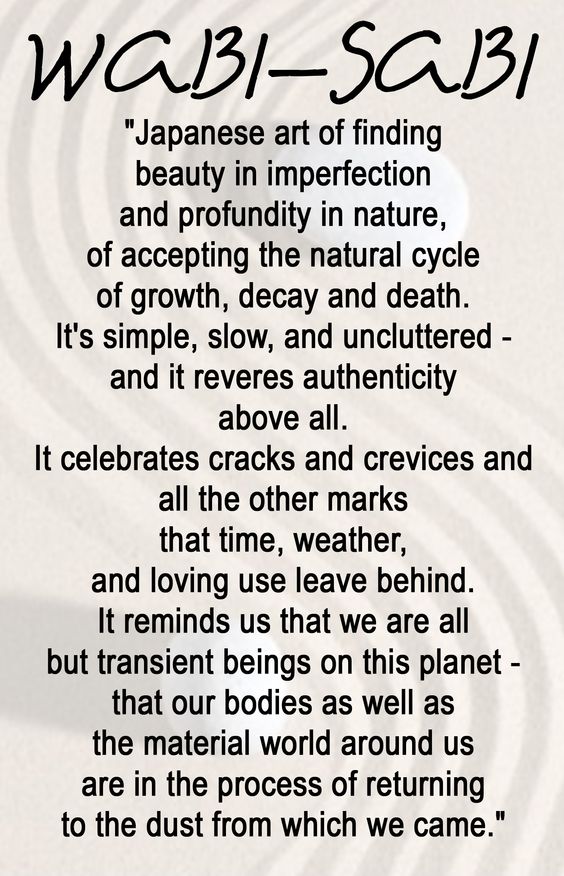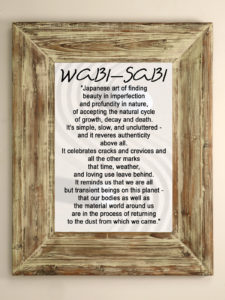Although cultural differences around the world seem to be gradually diminishing thanks to the media, social networks and massive travel, they are certainly not being completely erased. Fortunately for us – a few decades of the Internet and the subsequent expansion of social networks cannot erase centuries to millennia of ancient different traditions, customs and philosophies. Although we see many young people in Asia comparing themselves to our Western culture, we Westerners still have a lot to inspire and learn from ancient Eastern philosophies.
Mushin
One of these inspirational concepts is the Japanese term “mushin” – a fascinating form of meditation and mental state that can significantly affect the way a person lives and leads his life.
 The word “mushin” consists of two kanji characters: 無 (mu), which means “emptiness,” and 心 (shin), which means “heart,” “spirit,” or in this case, “mind.” Mushin can be roughly translated to “nothing on the mind” or “no mind.” It comes from a longer phrase used in Zen Buddhism, “無心 の 心” (mushin no shin), or “mind without thinking.”
The word “mushin” consists of two kanji characters: 無 (mu), which means “emptiness,” and 心 (shin), which means “heart,” “spirit,” or in this case, “mind.” Mushin can be roughly translated to “nothing on the mind” or “no mind.” It comes from a longer phrase used in Zen Buddhism, “無心 の 心” (mushin no shin), or “mind without thinking.”
What is mushin?
Mushin is a state of mind where your mind is empty of all thoughts, desires, ideas and assumptions. When your mind is clear, you are free from your ego and you are able to act spontaneously and fluently without emotion or hesitation. That way, your mind is opened to everything.
It is a concept that is important in many traditional Japanese arts such as ikebana flower arranging, a beautiful style of shodo calligraphy or sumi-e ink painting, but especially for Asian martial arts such as aikido.
The discipline and awareness of the present moment are very important for these arts. Through mushin, artists or fighters achieve great concentration and sensitivity. When their mind is clear, their work is intuitive and flows from the subconscious.
History
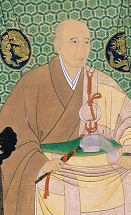
The first mention of mushin comes from the famous Zen Buddhist monk of the 17th century (but also a prominent Japanese poet, painter, calligrapher, expert in the tea ceremony) and, among other things, the excellent swordsman Takuan Soho (1573-1645) in The Unleashed Mind. In this work he combines aspects of Zen Buddhism with martial arts. The following paragraph provides an excellent explanation of what happens in the mind when in the mushin state:
“When the swordsman stands against his opponent, he is not to think of the opponent, nor of himself, nor of his enemy’s sword movements. He just stands there with his sword which, forgetful of all technique, is ready only to follow the dictates of the subconscious. The man has effaced himself as the wielder of the sword. When he strikes, it is not the man but the sword in the hand of the man`s subconscious that strikes.”
 Such a pure state of mind, pure mental clarity, means that the mind is not firm, busy with thoughts or emotions, and therefore open to everything. Present, conscious and free.
Such a pure state of mind, pure mental clarity, means that the mind is not firm, busy with thoughts or emotions, and therefore open to everything. Present, conscious and free.
This state is attained when the mind is freed from anger, fear, distracting thoughts, ego, and judgments. One is absolutely free to act and respond to situations without fear and without being disturbed by external factors. At this point, he doesn’t rely on what he thinks the next move should be, but what his naturally trained reactions are, or what he feels intuitive. However, it is not a state of relaxation close to sleep. We can say that the mind works very fast, but without intention, plan or direction.
Mushin in the western world
Mushin is a Japanese concept rooted in Zen Buddhism. But a certain version of mushin can be found in many different arts and disciplines around the world. For example, an athlete on the track also experiences some form of mushin. He must free himself from conscious thinking in order to “only” run. Although, for example, their extreme sharpness of concentration is called something else. The same can be said about actors whenever they improvise or get lost in a character. They must absolutely clear their minds of their ego so that they can respond quickly and appropriately to situations.
Why could it be useful for us?
Mushin is a very useful concept that we can be inspired by in many different life situations. Whatever your field, if you try to free your mind from the inner hustle and bustle of premature judgments and assumptions, you will stop evaluating possible failures in advance, but you will perceive only the present moment and immerse yourself only in the task, then maybe you can also experience mushin. It could even help you with your efforts, whether you’re an athlete, a creative person, or just need to focus better. It’s something worth thinking about.




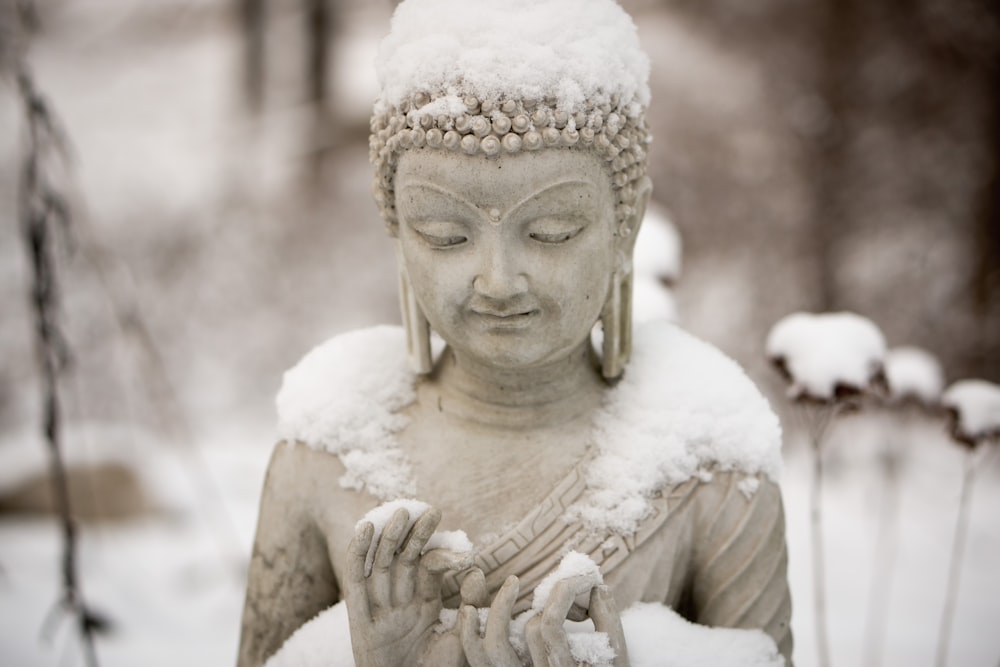
 Almost every one of us, regardless of age, would “sometimes” need or simply want to learn something new or “just” to improve in something. And not only in the professional life level, but also in the private one. Whether it is to learn a foreign language properly, improve your physical condition, or even fulfill your secret desire to learn to dance or paint pictures.
Almost every one of us, regardless of age, would “sometimes” need or simply want to learn something new or “just” to improve in something. And not only in the professional life level, but also in the private one. Whether it is to learn a foreign language properly, improve your physical condition, or even fulfill your secret desire to learn to dance or paint pictures.


 The word “kaizen” is a combination of two Japanese words “kai” and “zen”. “Kai” is literally a change, so in a rough Japanese translation, kaizen means “change for the better”, which simply expresses its essence – continuous gradual improvement.
The word “kaizen” is a combination of two Japanese words “kai” and “zen”. “Kai” is literally a change, so in a rough Japanese translation, kaizen means “change for the better”, which simply expresses its essence – continuous gradual improvement.
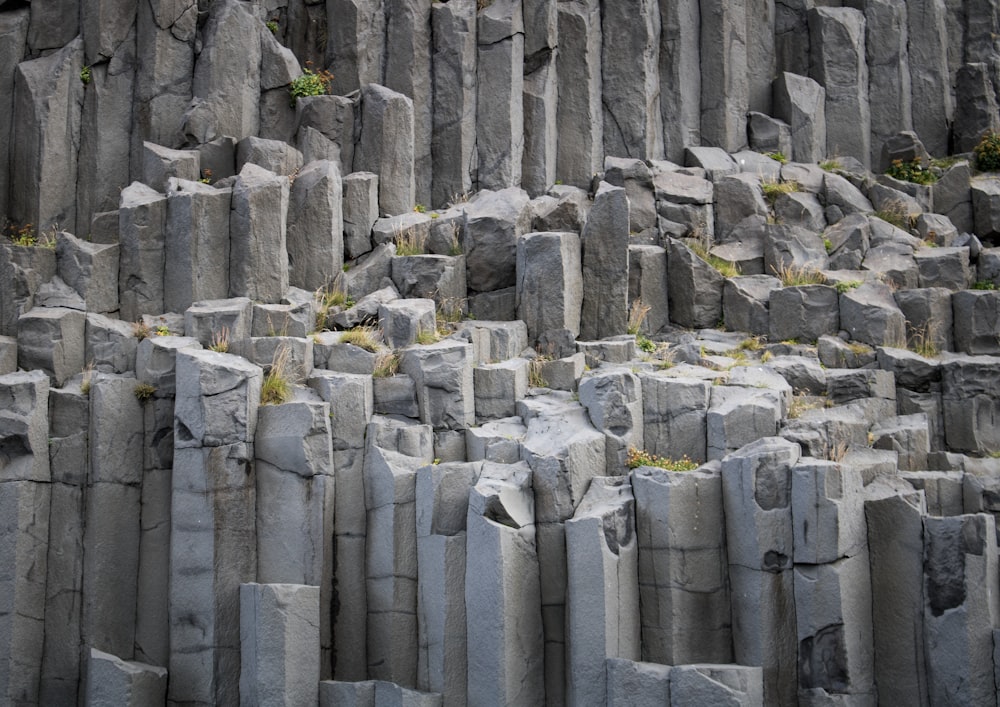
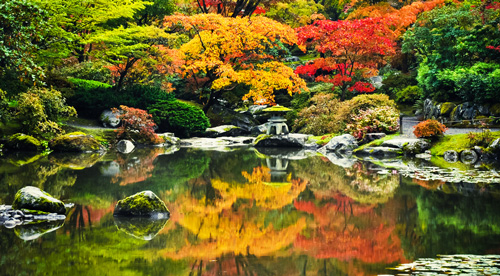
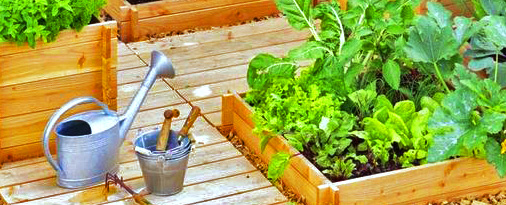
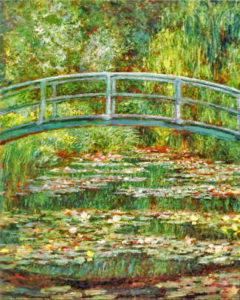
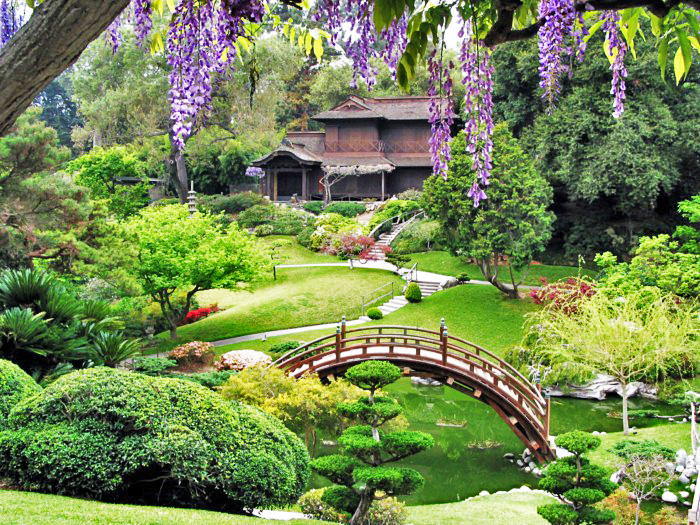 If you would like to create a truly authentic
If you would like to create a truly authentic 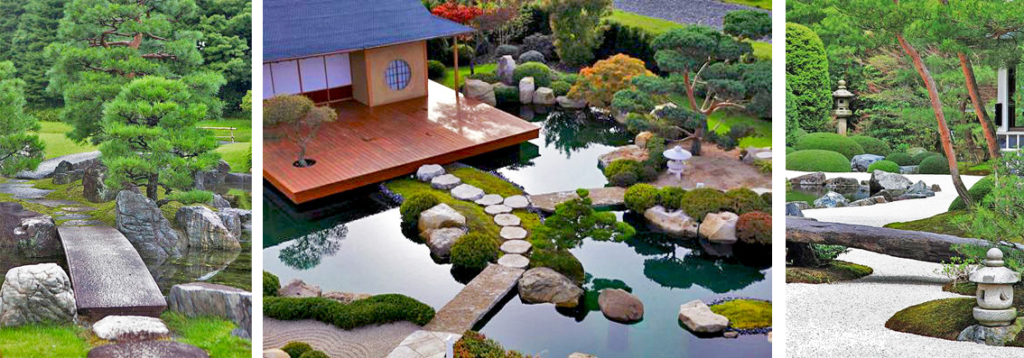 However, to create your own tranquil oasis of peace and harmony, you do not have to try for a completely authentic Japanese garden, strictly observing all the “rules” and aspects. You can only be inspired by some of these
However, to create your own tranquil oasis of peace and harmony, you do not have to try for a completely authentic Japanese garden, strictly observing all the “rules” and aspects. You can only be inspired by some of these 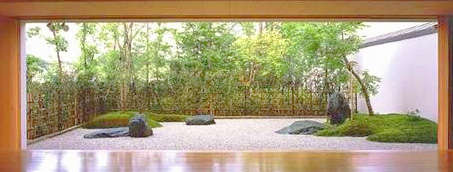 The appearance of a typical Zen garden defies the classic definition of “garden” in almost every aspect. It is not a place with lanes of lush trees, where a bright flood of flowers of all possible colours shines next to a green lawn. It’s not a place you would have a garden picnic or party at with your family or friends.
The appearance of a typical Zen garden defies the classic definition of “garden” in almost every aspect. It is not a place with lanes of lush trees, where a bright flood of flowers of all possible colours shines next to a green lawn. It’s not a place you would have a garden picnic or party at with your family or friends.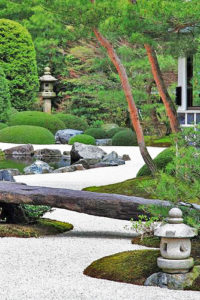 Right from the beginning, it should be stressed that the term “Zen Garden” is somewhat incorrect. It is only the “western” naming of this kind of gardens. Japanese for this type of gardens use the term “kare sansui”, which in literal translation means “dry mountains and waters” or “dry landscapes”.
Right from the beginning, it should be stressed that the term “Zen Garden” is somewhat incorrect. It is only the “western” naming of this kind of gardens. Japanese for this type of gardens use the term “kare sansui”, which in literal translation means “dry mountains and waters” or “dry landscapes”.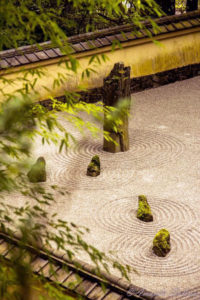 What is a Zen garden?
What is a Zen garden?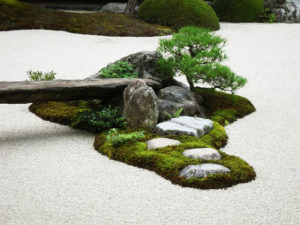 In Zen gardens, the typical purity and balance of space are most obvious aspects (
In Zen gardens, the typical purity and balance of space are most obvious aspects (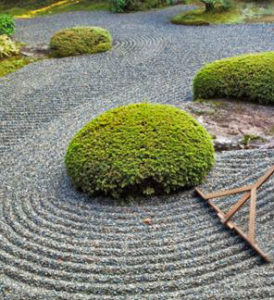 Zen gardens are intended as a personal project that reflects the own inner self. White sand or gravel is raked in an original pattern by the owner of the garden. Copying the pattern of another Zen Garden is against the spirit of such a garden; although this does not mean that you cannot inspire yourself.
Zen gardens are intended as a personal project that reflects the own inner self. White sand or gravel is raked in an original pattern by the owner of the garden. Copying the pattern of another Zen Garden is against the spirit of such a garden; although this does not mean that you cannot inspire yourself.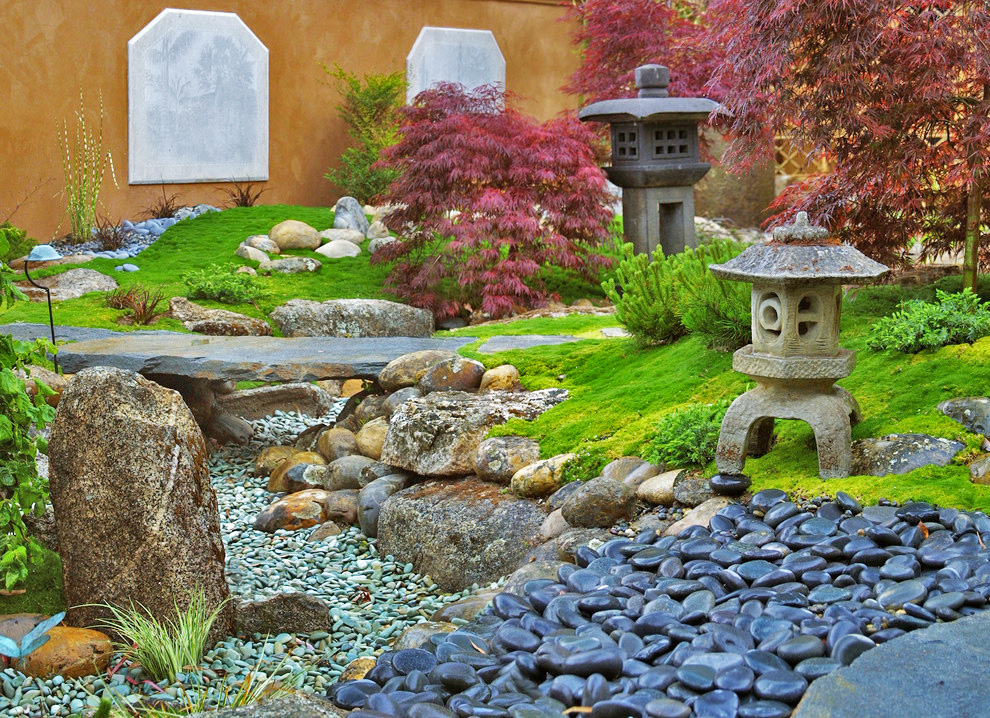 Do you like the idea of a small sanctuary of peace and tranquillity – a small zen space a few steps from your door, right in your garden? Although the art of Japanese gardening is many centuries old, in just one weekend you can create a reasonable replica of the classic temple garden in a corner of your garden. It requires a minimal amount of materials and money, and especially very little maintenance.
Do you like the idea of a small sanctuary of peace and tranquillity – a small zen space a few steps from your door, right in your garden? Although the art of Japanese gardening is many centuries old, in just one weekend you can create a reasonable replica of the classic temple garden in a corner of your garden. It requires a minimal amount of materials and money, and especially very little maintenance.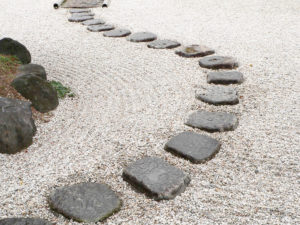 The basic ingredients you will need are a small, even a miniature land, some amount of sand (the whiter it is, the better) or tiny gravel to cover the ground (we recommend to lay a garden textile foil under it), some stones of different shapes and sizes. Do not worry too much about the right choice of stones at the beginning. Since they are not fixed, you can later simply replace, move and add some, and gradually tune them to your imagination.
The basic ingredients you will need are a small, even a miniature land, some amount of sand (the whiter it is, the better) or tiny gravel to cover the ground (we recommend to lay a garden textile foil under it), some stones of different shapes and sizes. Do not worry too much about the right choice of stones at the beginning. Since they are not fixed, you can later simply replace, move and add some, and gradually tune them to your imagination.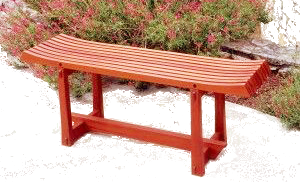
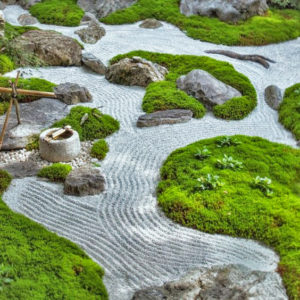 An ideal
An ideal 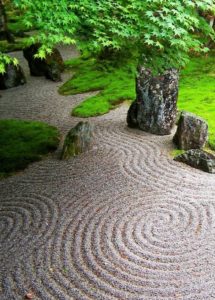
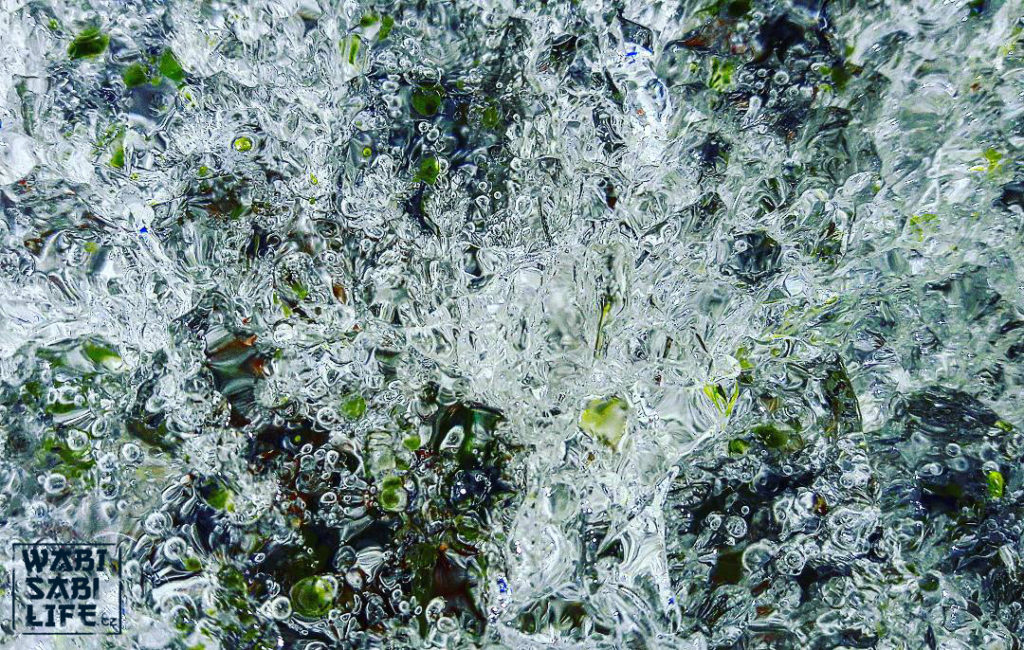 I am one of those people who love warmth. Which is not always the case in the local climate. I live in a part of the world where, despite global warming, we still have four very different seasons in nature – budding spring, hot summer, misty autumn and cold winter. Even though their transition is sometimes very fast, sometimes we feel as if one reflected in the other.
I am one of those people who love warmth. Which is not always the case in the local climate. I live in a part of the world where, despite global warming, we still have four very different seasons in nature – budding spring, hot summer, misty autumn and cold winter. Even though their transition is sometimes very fast, sometimes we feel as if one reflected in the other.

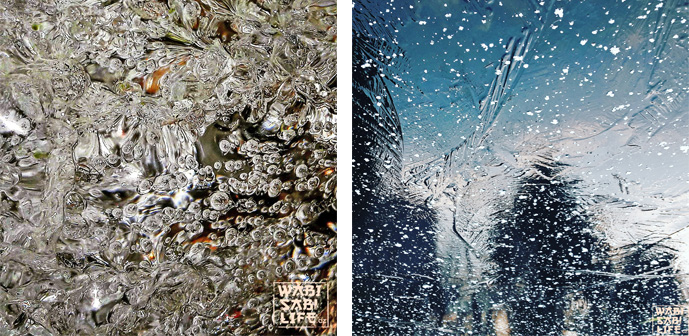
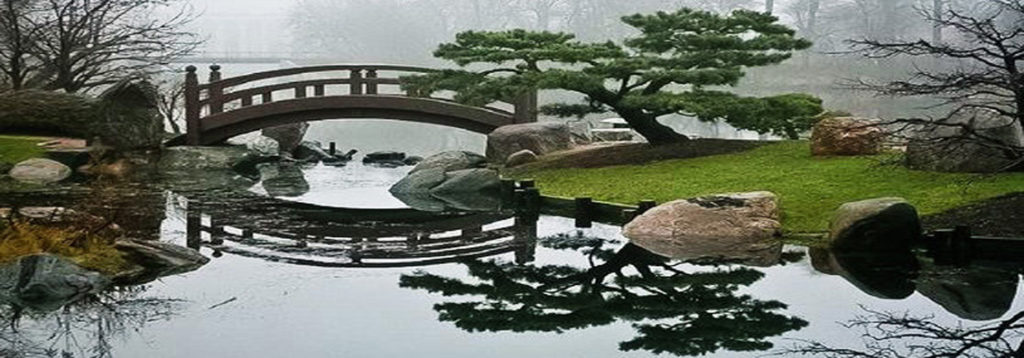 Water is one of the fundamental elements of
Water is one of the fundamental elements of 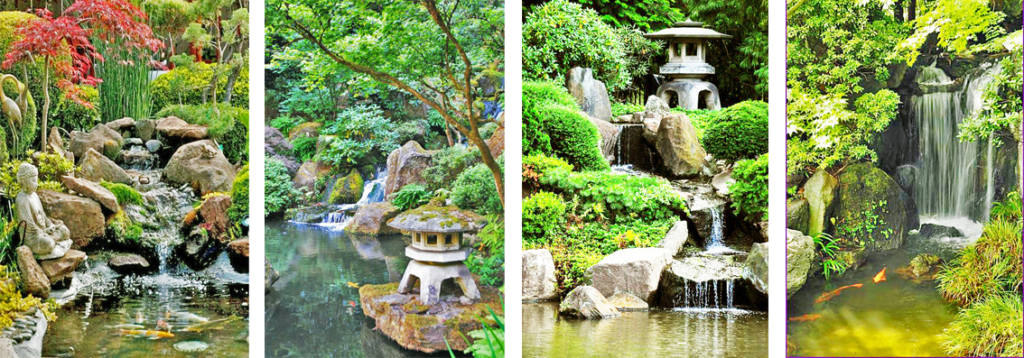
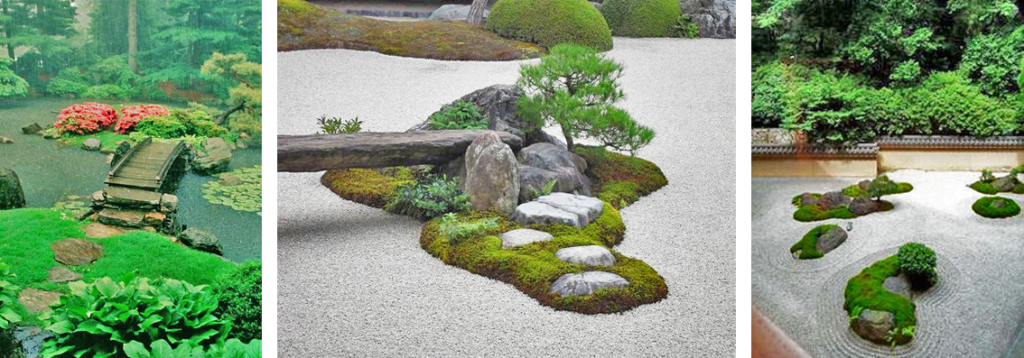
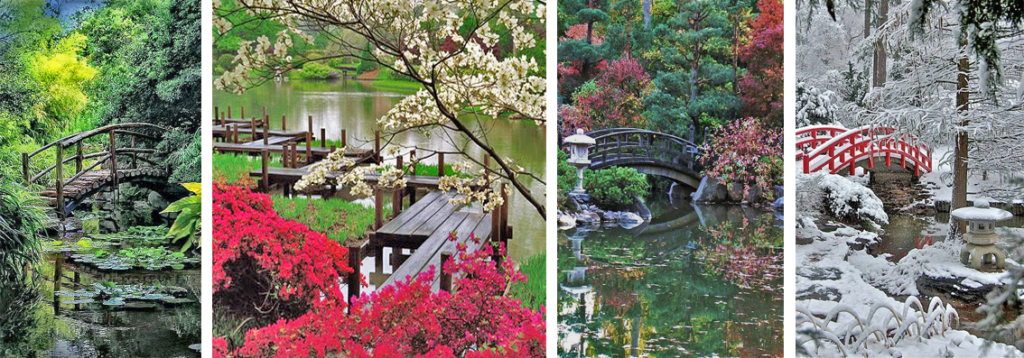
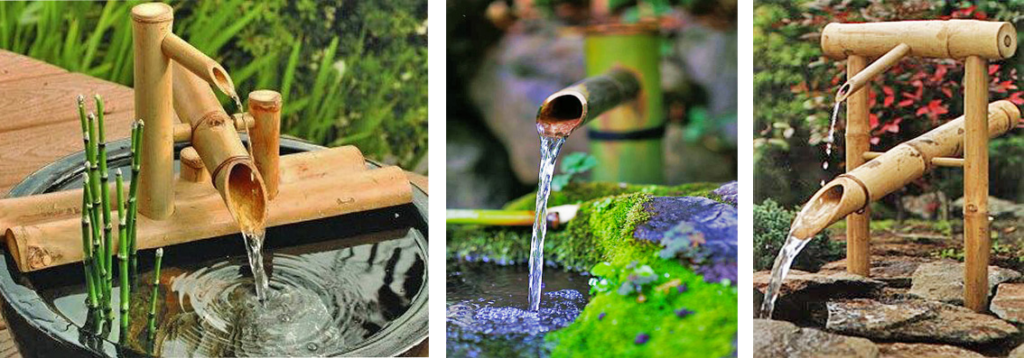
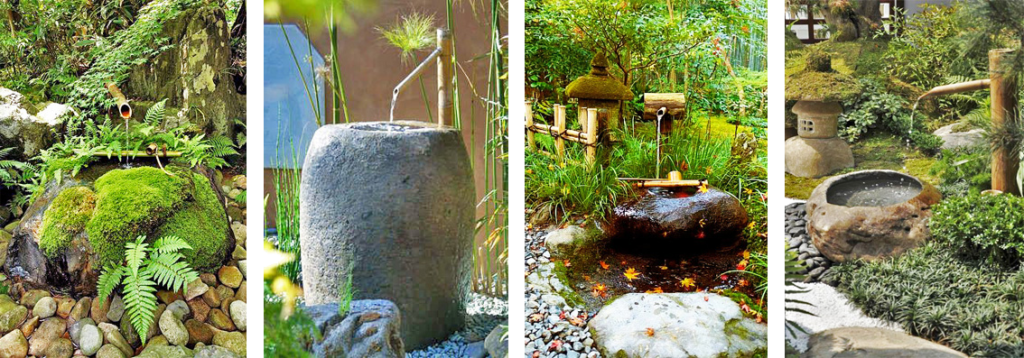
 Japanese koi carp and other fish bring into the water space wonderful colours and life.
Japanese koi carp and other fish bring into the water space wonderful colours and life.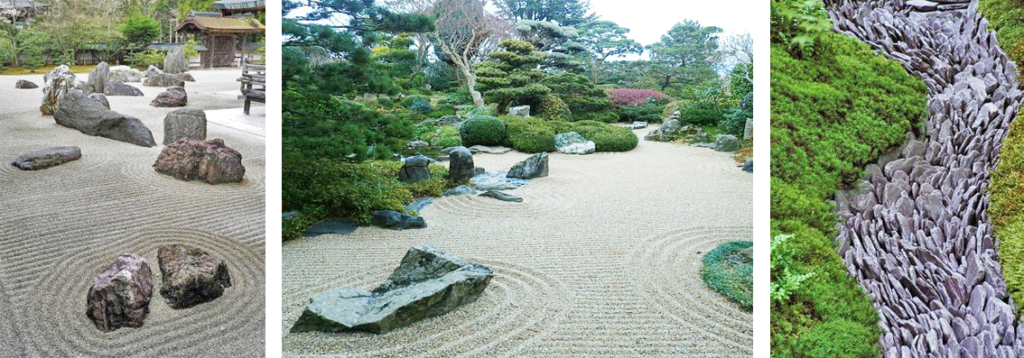
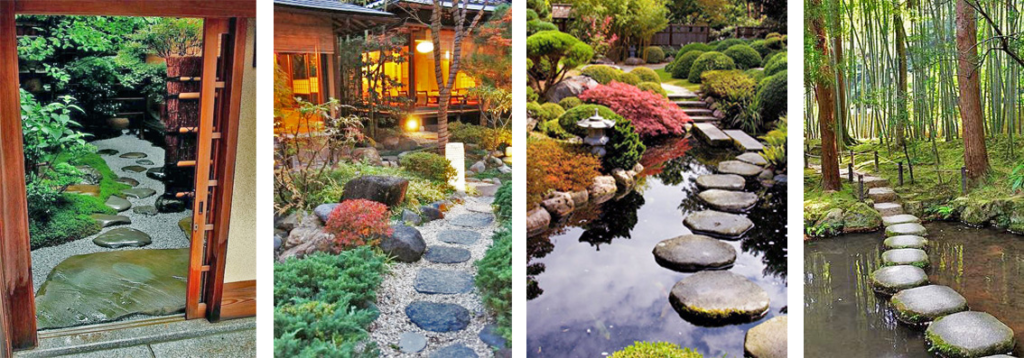
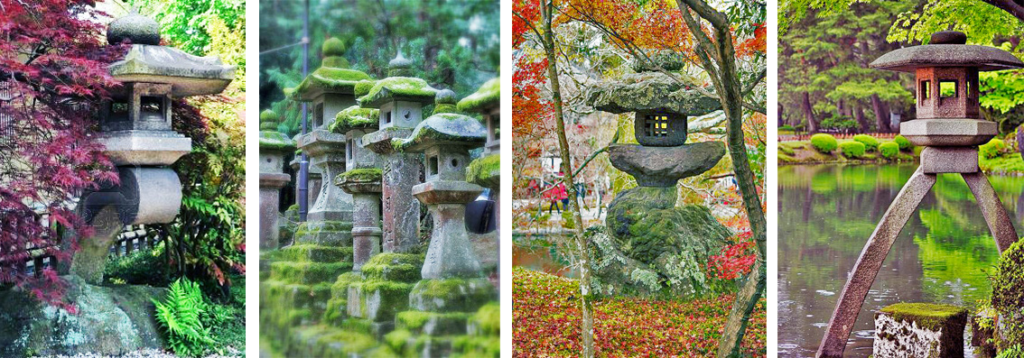


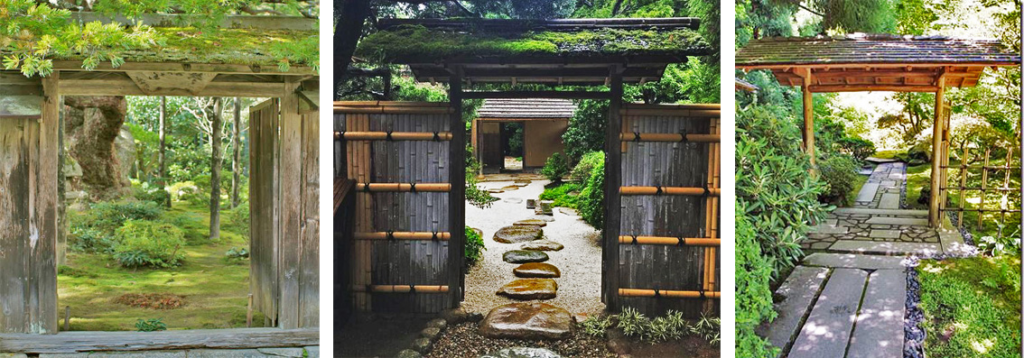
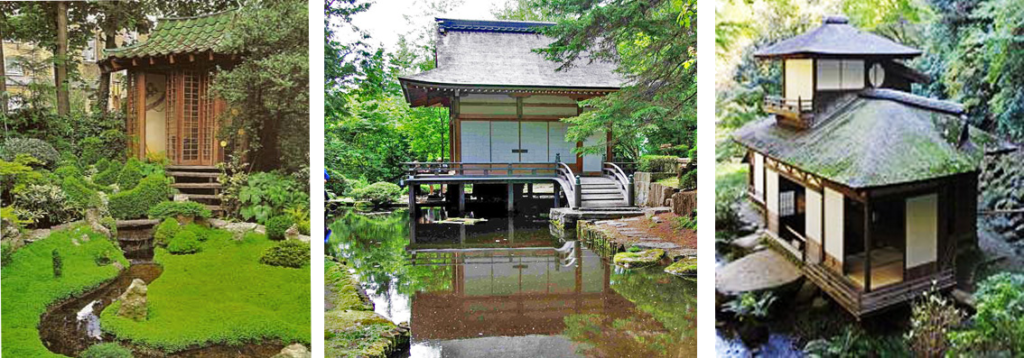
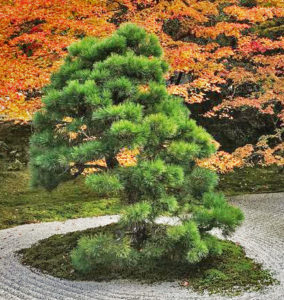 Trees and plants are not the most important element in Japanese gardens. Still, with most styles, the selection and composition of individual trees, shrubs, plants and mosses are very important. But that’s already a topic for another separate article.
Trees and plants are not the most important element in Japanese gardens. Still, with most styles, the selection and composition of individual trees, shrubs, plants and mosses are very important. But that’s already a topic for another separate article.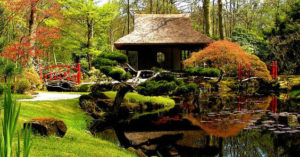 Japanese gardens have been inspiring more and more garden architects as well as gardeners themselves in the last century all over the world. Purity, simplicity, symbolism, harmony. All of us can evoke a pleasant feeling of peace. And above all, tranquillity and a slowdown in the flow of time is what in today’s increasingly hectic times we all,
Japanese gardens have been inspiring more and more garden architects as well as gardeners themselves in the last century all over the world. Purity, simplicity, symbolism, harmony. All of us can evoke a pleasant feeling of peace. And above all, tranquillity and a slowdown in the flow of time is what in today’s increasingly hectic times we all,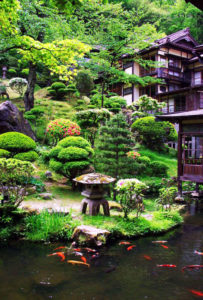 at least sometimes, want, look for, need.
at least sometimes, want, look for, need.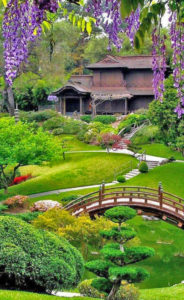
 Karesansui, or a dry / rock garden, better known as
Karesansui, or a dry / rock garden, better known as 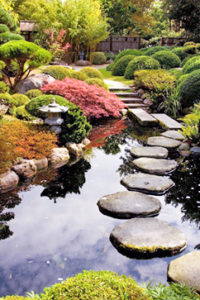
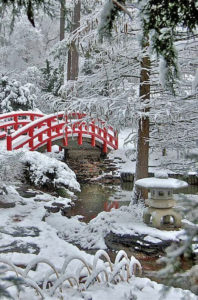
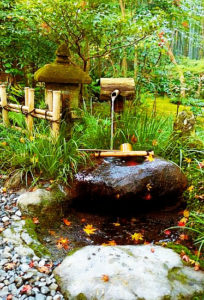
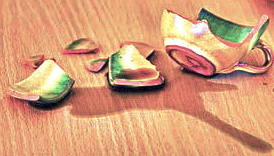
 If it is a very precious or favourite piece of yours and it has not cracked to too many shards, you might want to try to fix it so that it would not be visible repair. Then you can use such a mug, for example, for pencils, plate or bowl under the flower. But only if you can get it together in such way that it is not at first sight recognizable. Otherwise, you just throw it away.
If it is a very precious or favourite piece of yours and it has not cracked to too many shards, you might want to try to fix it so that it would not be visible repair. Then you can use such a mug, for example, for pencils, plate or bowl under the flower. But only if you can get it together in such way that it is not at first sight recognizable. Otherwise, you just throw it away.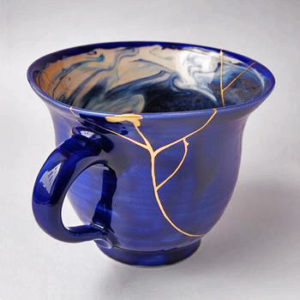
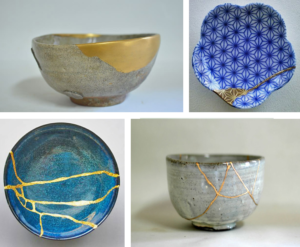
 The art of Kintsugi dates back to the end of the 15th century. According to one legend, this art came into being when Japanese shogun Ashikaga Yoshimasa sent a cracked Chinese chawan (a tea bowl) back to China for a repair. After its return, Yoshimasa was disappointed to find that this was corrected by unsightly metal staples. This motivated his craftsmen to find an alternative, aesthetically pleasing method of repair. And so Kintsugi was born.
The art of Kintsugi dates back to the end of the 15th century. According to one legend, this art came into being when Japanese shogun Ashikaga Yoshimasa sent a cracked Chinese chawan (a tea bowl) back to China for a repair. After its return, Yoshimasa was disappointed to find that this was corrected by unsightly metal staples. This motivated his craftsmen to find an alternative, aesthetically pleasing method of repair. And so Kintsugi was born.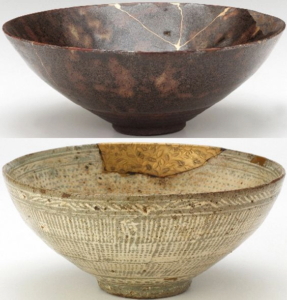 Collectors were so enchanted by this new art that some were accused of deliberately breaking valuable pottery to repair it with the golden Kintsugi seams. Kintsugi became closely associated with the ceramic vessels used for the Japanese tea ceremony – the chanoyu. However, over time, this technique has also been applied to ceramic pieces of non-Japanese origin, including China, Vietnam and Korea.
Collectors were so enchanted by this new art that some were accused of deliberately breaking valuable pottery to repair it with the golden Kintsugi seams. Kintsugi became closely associated with the ceramic vessels used for the Japanese tea ceremony – the chanoyu. However, over time, this technique has also been applied to ceramic pieces of non-Japanese origin, including China, Vietnam and Korea. Since its inception, Kintsugi technique has been connected and influenced by various philosophical thoughts. Specifically, with Japanese philosophy
Since its inception, Kintsugi technique has been connected and influenced by various philosophical thoughts. Specifically, with Japanese philosophy 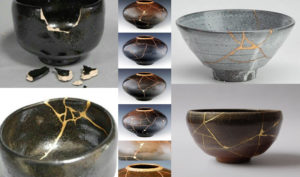 Crack repair method – use of gold dust and resin or lacquer to fix broken pieces with minimal overlapping or filling of missing pieces
Crack repair method – use of gold dust and resin or lacquer to fix broken pieces with minimal overlapping or filling of missing pieces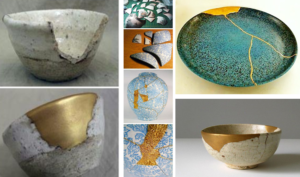 The piece recovery method – if a ceramic fragment is not available, it is produced and supplemented exclusively by epoxy resin – golden mixtures
The piece recovery method – if a ceramic fragment is not available, it is produced and supplemented exclusively by epoxy resin – golden mixtures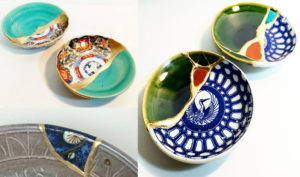 Joint call method – the missing piece of ceramics is replaced by a similarly shaped but inconsistent fragment of aesthetically different ceramics. It combines two visually different works into one unique piece. It is a method reminiscent of the well-known patchwork.
Joint call method – the missing piece of ceramics is replaced by a similarly shaped but inconsistent fragment of aesthetically different ceramics. It combines two visually different works into one unique piece. It is a method reminiscent of the well-known patchwork.



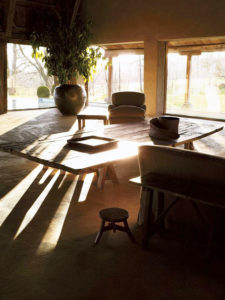 He gained the love for all the old and authentic and a certain fascination by the Middle Ages, the Renaissance and the Baroque, in his youth, when he helped his mother with the reconstructions of old houses in the Vlaeykensgang – the historic district of Antwerp, which was then rented to local artists. To this he later, thanks to business travels throughout Thailand, Cambodia and Japan, added an admiration for Eastern philosophies and art.
He gained the love for all the old and authentic and a certain fascination by the Middle Ages, the Renaissance and the Baroque, in his youth, when he helped his mother with the reconstructions of old houses in the Vlaeykensgang – the historic district of Antwerp, which was then rented to local artists. To this he later, thanks to business travels throughout Thailand, Cambodia and Japan, added an admiration for Eastern philosophies and art.
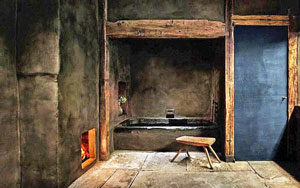 For some, his combination of materials and styles may seem contradictory, but Vervoordt believes that truth may be contained in a paradox and in ambiguity.
For some, his combination of materials and styles may seem contradictory, but Vervoordt believes that truth may be contained in a paradox and in ambiguity.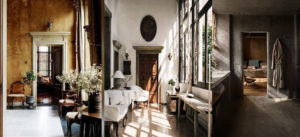
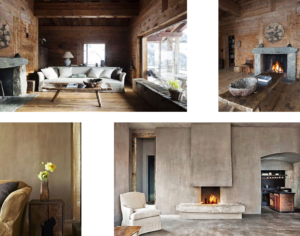
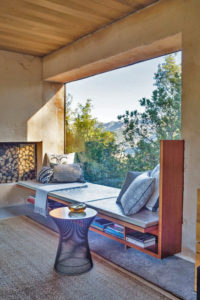 The home should always be a place where you can forget about the difficulties of the surrounding world. A home based on wabi-sabi should be a place where you feel absolutely free and unrestrained, to relax, to meditate, but also to create and develop your creativity.
The home should always be a place where you can forget about the difficulties of the surrounding world. A home based on wabi-sabi should be a place where you feel absolutely free and unrestrained, to relax, to meditate, but also to create and develop your creativity. For an at least partial transformation of our home into the wabi-sabi style we do not need great finance or even a designer work. A few little steps might just be enough.
For an at least partial transformation of our home into the wabi-sabi style we do not need great finance or even a designer work. A few little steps might just be enough.
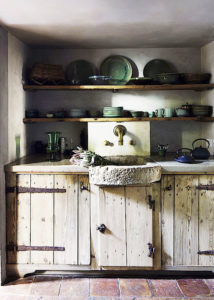
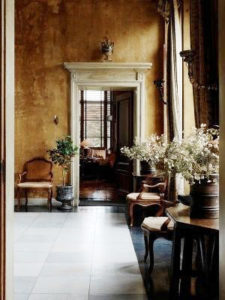 As already mentioned – space, light, purity and simplicity – these are the fundamental principles of wabi-sabi interior. You probably won’t enlarge your room by any magic wand, but sometimes it’s enough to just move a piece of furniture into the corner or to think about the necessity of having some of our stuff. Cleanliness (purity) is practised not only figuratively, but literally. With the cleanliness of our home, we express our respect for our visitors, but above all that we respect ourselves. By keeping surfaces free of dust and dirt we deliver to our space the desired feeling of peace and order.
As already mentioned – space, light, purity and simplicity – these are the fundamental principles of wabi-sabi interior. You probably won’t enlarge your room by any magic wand, but sometimes it’s enough to just move a piece of furniture into the corner or to think about the necessity of having some of our stuff. Cleanliness (purity) is practised not only figuratively, but literally. With the cleanliness of our home, we express our respect for our visitors, but above all that we respect ourselves. By keeping surfaces free of dust and dirt we deliver to our space the desired feeling of peace and order.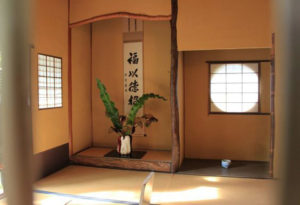 Try the old Japanese method of ROTATING PRECIOUS ITEMS. Japanese hid their valuables and were displayed just a few of them in a specially designated area or in a special niche – tokonoma. After a certain time, they realigned them. Assuming we have storage space, we just hide these little things and our valuable belongings and display only a few of them at a time. After some time, we replace them with another from our “warehouse”. This method is far less painful than just getting rid of our “valuables.” Moreover, after some time when we do not have them all the time in our eyes, they will seemingly come off as even rarer or on the contrary, suitable for throwing out or handing over.
Try the old Japanese method of ROTATING PRECIOUS ITEMS. Japanese hid their valuables and were displayed just a few of them in a specially designated area or in a special niche – tokonoma. After a certain time, they realigned them. Assuming we have storage space, we just hide these little things and our valuable belongings and display only a few of them at a time. After some time, we replace them with another from our “warehouse”. This method is far less painful than just getting rid of our “valuables.” Moreover, after some time when we do not have them all the time in our eyes, they will seemingly come off as even rarer or on the contrary, suitable for throwing out or handing over.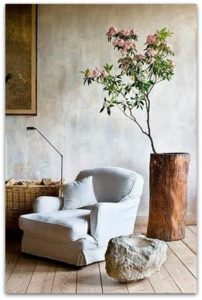 The wabi-sabi style is not suitable for supporters of consumerism. On the contrary, it is inclining towards a sustainable environmental approach. Things and equipment made of quality natural materials and in good quality design are not hurt by time or a gentle usage. Getting a patina of time often rather benefits them. And we do not change such things so often.
The wabi-sabi style is not suitable for supporters of consumerism. On the contrary, it is inclining towards a sustainable environmental approach. Things and equipment made of quality natural materials and in good quality design are not hurt by time or a gentle usage. Getting a patina of time often rather benefits them. And we do not change such things so often.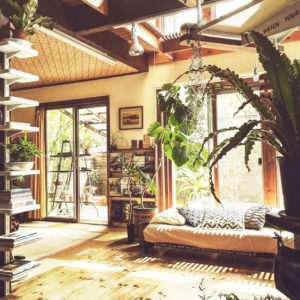 To make our home really a place where we feel absolutely free, freely, fetterless, we should listen to our feelings and take heed of our intuitions when arranging it. In that way, we use colours, materials, and objects that we love and that are pleasing to us.
To make our home really a place where we feel absolutely free, freely, fetterless, we should listen to our feelings and take heed of our intuitions when arranging it. In that way, we use colours, materials, and objects that we love and that are pleasing to us.
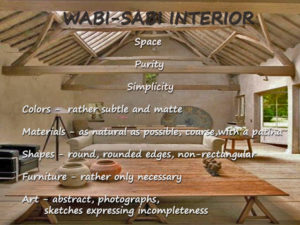
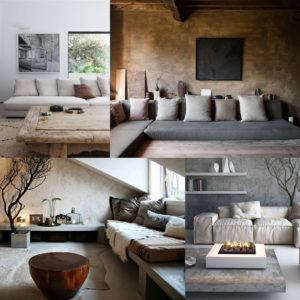 The wabi-sabi style is not suitable for supporters of consumerism. On the contrary, it is inclining towards a sustainable environmental approach. Things and equipment made of quality natural materials and in good quality design are not hurt by time or a gentle usage. Getting a patina of time often rather benefits them. And we do not change such things so often.
The wabi-sabi style is not suitable for supporters of consumerism. On the contrary, it is inclining towards a sustainable environmental approach. Things and equipment made of quality natural materials and in good quality design are not hurt by time or a gentle usage. Getting a patina of time often rather benefits them. And we do not change such things so often.
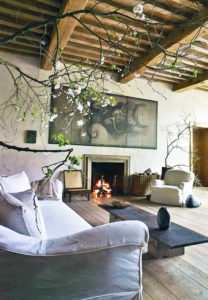 If you’ve recently found demonstrations of interiors in the style of wabi-sabi in magazines, they were often very expensive residences. And often they are also homes of more or less well-known people (
If you’ve recently found demonstrations of interiors in the style of wabi-sabi in magazines, they were often very expensive residences. And often they are also homes of more or less well-known people (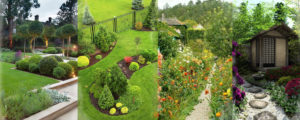
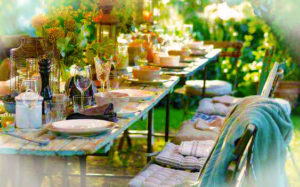 Our family definitely belongs to the last group. Our garden is a place where we spend a lot of our time „at home“, our family dinners, weekend meals, birthday parties, coffee drinking or an evening glass of wine rarely take place inside the house between April and September.
Our family definitely belongs to the last group. Our garden is a place where we spend a lot of our time „at home“, our family dinners, weekend meals, birthday parties, coffee drinking or an evening glass of wine rarely take place inside the house between April and September. Our garden definitely shows the changes in our family life. When the children were younger, it was a place of fun, games and constant exploration. It was a place that had to be safe for them, but at the same time diverse enough to still be interesting.
Our garden definitely shows the changes in our family life. When the children were younger, it was a place of fun, games and constant exploration. It was a place that had to be safe for them, but at the same time diverse enough to still be interesting.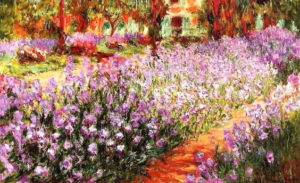 Actually, I think that in a part of our garden the birds were the best gardeners, as years ago they planted three trees with an almost perfect spacing – a cherry tree, a walnut tree and a Salix lucida willow, all of which currently have over three meters in height and are towering over the northern border of our land above flowers that grow underneath them. However, it remains true that the wildness was also part of the reason why we couldn‘t spend more time on perfecting the garden.
Actually, I think that in a part of our garden the birds were the best gardeners, as years ago they planted three trees with an almost perfect spacing – a cherry tree, a walnut tree and a Salix lucida willow, all of which currently have over three meters in height and are towering over the northern border of our land above flowers that grow underneath them. However, it remains true that the wildness was also part of the reason why we couldn‘t spend more time on perfecting the garden.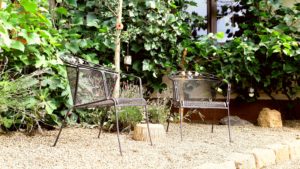 bles me to find a feeling of calmness and happiness within me without an obvious reason, to forget the everyday errands, that often catch us into the chronical feeling that we “do not have time”.
bles me to find a feeling of calmness and happiness within me without an obvious reason, to forget the everyday errands, that often catch us into the chronical feeling that we “do not have time”.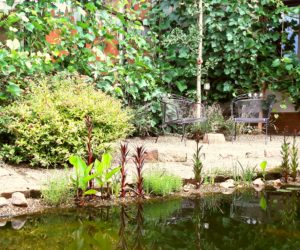 The daybeds in a covered part of the garden with an excellent view of the grown trees and constantly growing flowers are my favourite spot, and not just for a summer laziness. The old hammock located under a full-grown walnut tree is a great spot for some quality time spent reading a book. A previously not-so-used corner of our garden has become, after the construction of a pond with fish, a sought out a place for contemplation, and not just by myself.
The daybeds in a covered part of the garden with an excellent view of the grown trees and constantly growing flowers are my favourite spot, and not just for a summer laziness. The old hammock located under a full-grown walnut tree is a great spot for some quality time spent reading a book. A previously not-so-used corner of our garden has become, after the construction of a pond with fish, a sought out a place for contemplation, and not just by myself.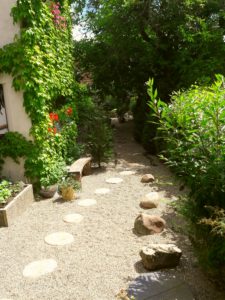 Hopefully, one day all of the individual parts of our garden come together to form a path, after which if any of us go through, will remain connected with nature through sounds, smells, sight, touch and taste. Though short, a journey through a variety of sensorial experiences.
Hopefully, one day all of the individual parts of our garden come together to form a path, after which if any of us go through, will remain connected with nature through sounds, smells, sight, touch and taste. Though short, a journey through a variety of sensorial experiences.


 Everyone knows old houses have their flies, so you can imagine the hundred-year-old one. But in some of those “errors of the beauty”, a certain poetry could be seen in those.
Everyone knows old houses have their flies, so you can imagine the hundred-year-old one. But in some of those “errors of the beauty”, a certain poetry could be seen in those.